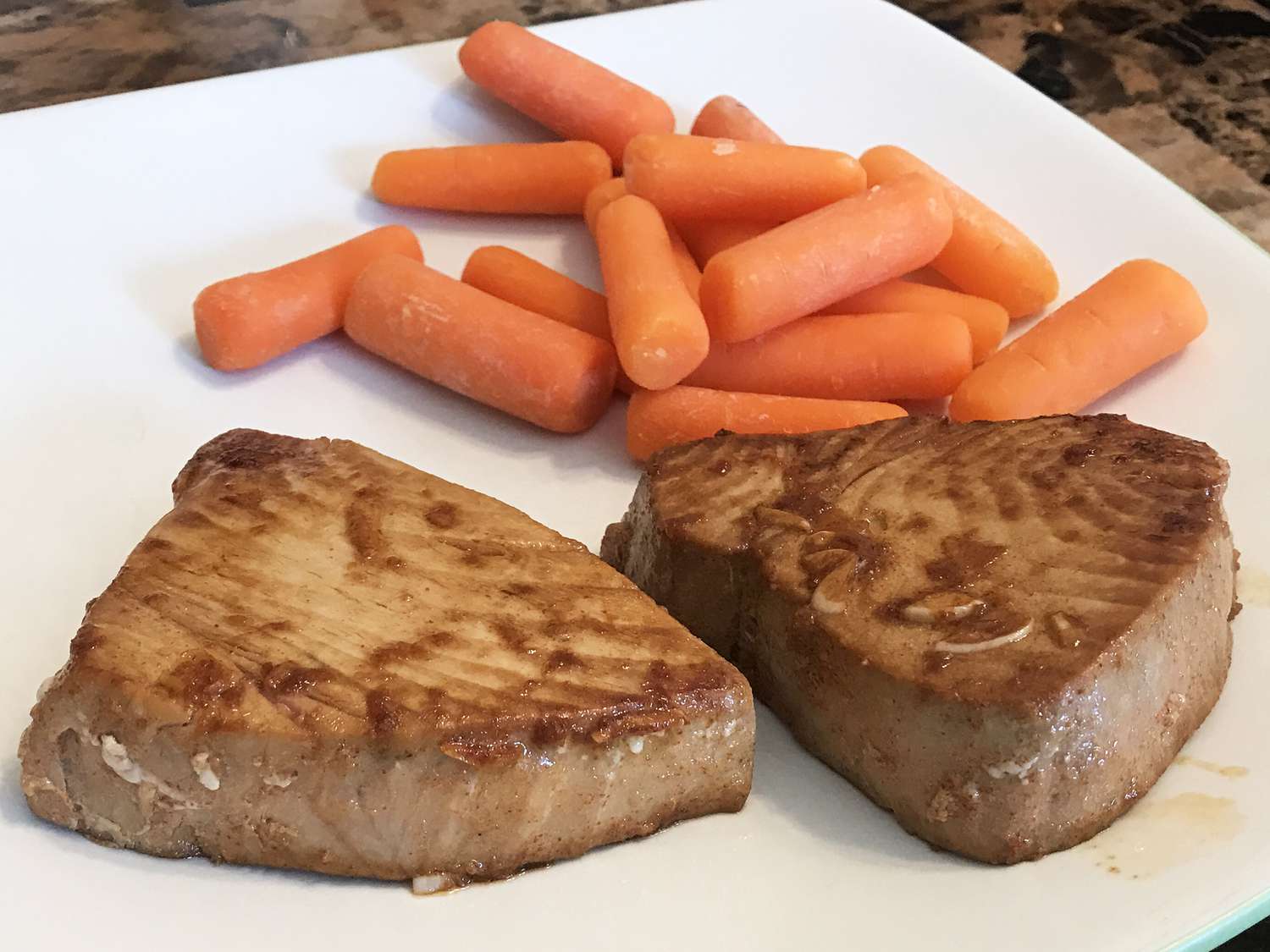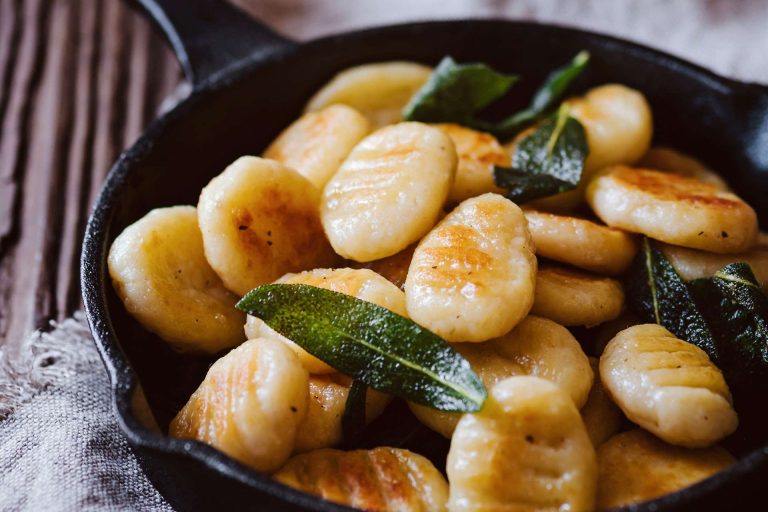Savory Pan Seared Tuna Steaks: Tips, Side Dishes & Plating Techniques
Decide between fresh and frozen tuna based on availability and preference. Fresh tuna is often preferred for its tender texture and vibrant flavor. Look for bright red, moist fillets with a clean ocean aroma to ensure freshness. If choosing frozen tuna, opt for vacuum-sealed, flash-frozen options to retain quality and minimize freezer burn. Thaw the tuna properly, ideally in the refrigerator overnight, to preserve its integrity and prevent uneven cooking.
Best Types of Tuna for Pan Searing
Choose the right type of tuna to achieve the best results. Yellowfin (Ahi) tuna is popular due to its firm texture and mild flavor, making it ideal for pan searing. Bluefin tuna, while more expensive, offers a rich, buttery taste and is often sought after for premium dishes. Albacore tuna, with its lighter color and delicate texture, is another excellent choice for a tender steak. Look for thick, evenly-cut steaks to ensure a consistent sear and even cooking.
Essential Tools for Perfect Pan Seared Tuna Steaks
Choosing the Right Pan
Selecting the right pan is crucial for achieving perfect pan-seared tuna steaks. A heavy-bottomed skillet, such as cast iron or stainless steel, ensures even heat distribution. Cast iron retains heat well, making it ideal for the high temperatures required. Stainless steel pans provide precise temperature control, which helps create a perfect sear without sticking. Non-stick pans, while convenient, may not reach the same high temperatures necessary for an optimal sear.
Other Useful Kitchen Gadgets
Several kitchen gadgets enhance the process of pan-searing tuna steaks:
- Instant-read Thermometer: This tool ensures your tuna steaks reach the desired internal temperature of 115°F to 120°F without overcooking.
- Tongs: Tongs help you flip the tuna steaks effortlessly while maintaining their delicate texture.
- Splatter Screen: This prevents oil splatters, keeping your cooking area clean and safe.
- Meat Tenderizer: If needed, a meat tenderizer can ensure a uniform thickness for even cooking.
- Fish Spatula: Its thin, flexible design makes it perfect for handling delicate tuna steaks without tearing.
Using these tools will help you create restaurant-quality pan-seared tuna steaks at home.
Preparing Your Tuna Steaks
Ingredients for a Savory Flavor
Start with high-quality, fresh tuna steaks. Opt for yellowfin, bluefin, or albacore for the best taste and texture. Gather kosher salt, freshly ground black pepper, garlic powder, and olive oil. For added depth, use soy sauce, lemon juice, and fresh herbs like thyme or rosemary.
Marinating Techniques
Combine olive oil, soy sauce, and lemon juice in a bowl. Add minced garlic, fresh herbs, and a pinch of kosher salt and pepper. Place the tuna steaks in the bowl, ensuring they are fully coated. Let the tuna marinate in the refrigerator for 30 minutes to an hour. This step enhances the flavor and helps tenderize the meat.
Cooking Savory Pan Seared Tuna Steaks
Step-by-Step Cooking Process
Start by removing the tuna from the refrigerator and letting it sit for 20-30 minutes to reach room temperature. Dry the tuna steaks thoroughly using paper towels, as excess moisture can hinder proper searing. Season both sides generously with salt and pepper to enhance the natural flavors.
Heat a heavy-bottomed skillet over medium-high heat until it’s hot but not smoking. Add a tablespoon of high-smoke point oil, such as canola or avocado oil, to the skillet. Once the oil shimmers, place the tuna steaks in the pan without crowding them.
Cook the tuna for 1-2 minutes on each side to achieve a medium-rare center. Use an instant-read thermometer to monitor the internal temperature, aiming for 115°F (46°C) for that perfect medium-rare doneness. If you prefer a different level of doneness, adjust the cooking time accordingly.
Remove the tuna from the pan and let it rest for a couple of minutes. This step allows the juices to redistribute, ensuring a moist and flavorful steak. Slice the tuna against the grain into 1/4-inch thick pieces for serving.
Tips for Achieving the Perfect Sear
Ensure your skillet is adequately heated before adding the tuna steaks. A hot skillet contributes to a perfect sear by caramelizing the surface, enhancing flavor and texture.
Use dry tuna steaks, as moisture prevents a proper sear. Patting them dry with paper towels helps achieve this.
Do not overcrowd the pan. Cooking in batches if necessary ensures that the steaks cook evenly and don’t steam instead of sear.
Apply gentle pressure with a fish spatula during searing to ensure maximum contact between the tuna and the skillet. This helps develop a crispy crust without overcooking the interior.
Rest the tuna after cooking. Allowing a brief resting period lets the juices redistribute, making the tuna more succulent and flavorful.
Serving and Presentation
Side Dishes That Complement Tuna
Pairing the right side dishes with your savory pan-seared tuna enhances its flavors. Consider these:
- Vegetables: Steamed asparagus, sautéed spinach, or roasted Brussels sprouts introduce a fresh, green element to your meal.
- Grains: A light quinoa salad, wild rice pilaf, or couscous provides a balanced, earthy contrast to the rich tuna taste.
- Starches: Garlic mashed potatoes, sweet potato fries, or crispy plantains add a comforting, hearty aspect.
- Salads: A mixed greens salad with a tangy vinaigrette or an Asian slaw offers a refreshing note that complements the tuna’s savory profile.
Plating Techniques
Proper presentation elevates your dish visually and enhances the dining experience. Try these techniques:
- Symmetry: Place the tuna steak centrally on the plate with side dishes arranged around it symmetrically for a balanced look.
- Height: Stack components, like placing the tuna atop a bed of greens, creating a visually appealing layered effect.
- Color Contrast: Use vibrant side dishes to create color contrasts. For example, pair the tuna with bright vegetables like cherry tomatoes or bell peppers.
- Garnishes: Add finishing touches such as lemon wedges, microgreens, or a drizzle of sauce to enhance both flavor and appearance.
- Clean Edges: Wipe the plate’s rim for a clean, polished presentation before serving.
Following these serving and plating suggestions ensures your savory pan-seared tuna steaks look as good as they taste.
Conclusion
Mastering the art of pan-seared tuna steaks elevates your home-cooked meals to restaurant-quality dining. By carefully selecting the right tuna and following the step-by-step cooking process, you ensure tender, flavorful results every time. Pairing your tuna with complementary side dishes and employing thoughtful plating techniques enhances both taste and visual appeal. With these tips, you’ll create a memorable and satisfying culinary experience that impresses family and friends alike. Dive into the world of savory pan-seared tuna steaks and enjoy the delicious rewards.






